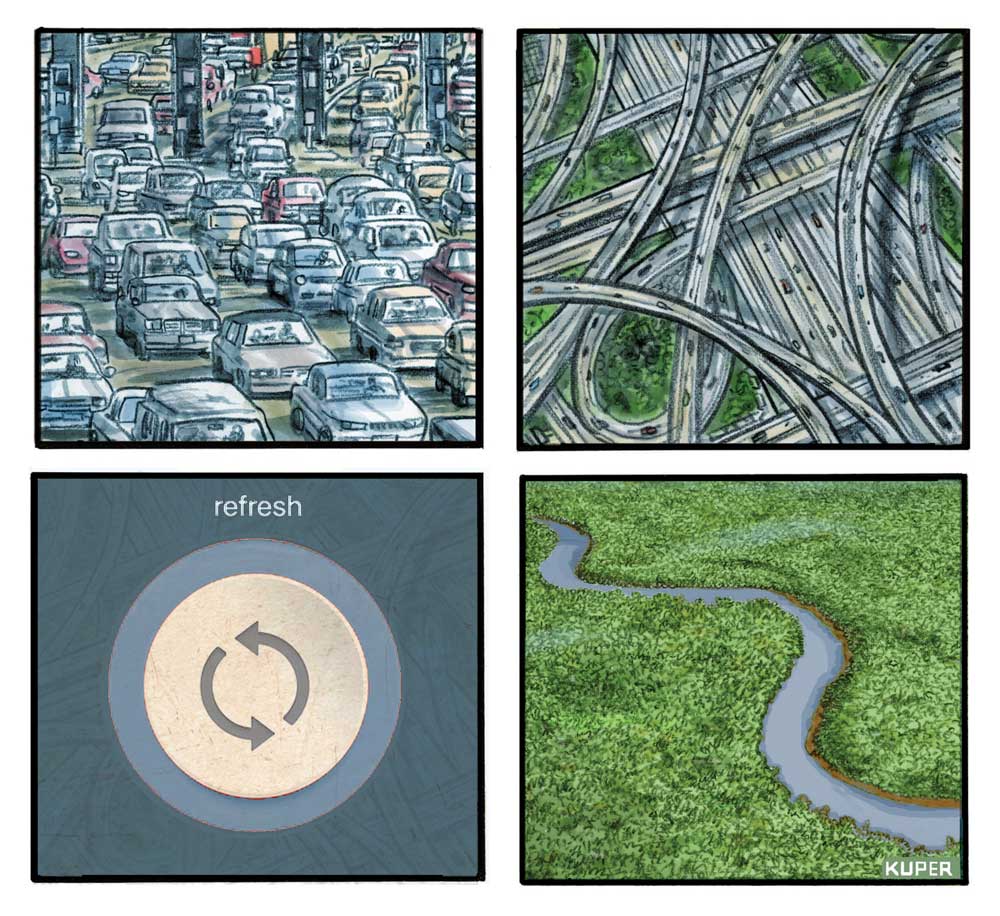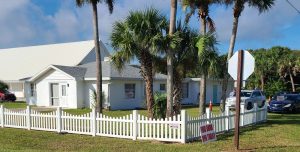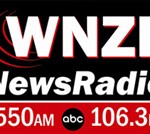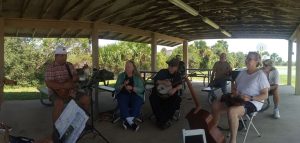
To include your event in the Briefing and Live Calendar, please fill out this form.
Weather: Sunny. Highs in the mid 90s. Saturday Night: Mostly clear. Lows in the upper 60s.
- Daily weather briefing from the National Weather Service in Jacksonville here.
- Drought conditions here. (What is the Keetch-Byram drought index?).
- Check today’s tides in Flagler Beach here.
- tropical cyclone activity here, and even more details here.
Today at a Glance:
The third annual Hang 8 Dog Surfing Competition in Flagler Beach is from 8 a.m. to 2 p.m., at the South 5th Street walkover off of State Road A1A just south of the Flagler Beach pier. Registration for dog surfing is $20, registration for the costume contest is $10. All proceeds go to charities. The awards ceremony is at 1 p.m. You can register your dog for the Hang 8 Dog Surfing competition at hang8dogsurfing.com. See: “Hang 8 Dog Surfing Contest Returns to Flagler Beach in All Its Ridiculous and Timely Exuberance.”
The Saturday Flagler Beach Farmers Market is scheduled for 9 a.m. to 1 p.m. today at Wickline Park, 315 South 7th Street, featuring prepared food, fruit, vegetables , handmade products and local arts from more than 30 local merchants. The market is hosted by Flagler Strong, a non-profit.
Coffee With Commissioner Scott Spradley: Flagler Beach Commission Chairman Scott Spradley hosts his weekly informal town hall with coffee and doughnuts at 9 a.m. at his law office at 301 South Central Avenue, Flagler Beach. All subjects, all interested residents or non-residents welcome. The gatherings occasionally feature a special guest.
Juneteenth Community Festival at Carver Center, 10 a.m. to 5 p.m. at Carver Center (Carver Gym), 201 E Drain St, Bunnell. Live music, vendors, food trucks, African artwork exhibit, games and fun. Contact 386/338-8991 for information. The festival will be in memory of Daisy Henry.
American Association of University Women (AAUW) Monthly Meeting, 11 a.m. at Cypress Knoll Golf Club, 53 Easthampton Blvd, Palm Coast. A monthly speaker is featured. Lunch is available for $20 in cash, $21 by credit card, but must be ordered in advance. The lunch menu is available on our website. Lunch may be ordered by sending an email to: [email protected].
Gamble Jam: Musicians of all ages can bring instruments and chairs and join in the jam session, 2 to 5 p.m. . Program is free with park admission! Gamble Rogers Memorial State Recreation Area at Flagler Beach, 3100 S. Oceanshore Blvd., Flagler Beach, FL. Call the Ranger Station at (386) 517-2086 for more information. The Gamble Jam is a family-friendly event that occurs every second and fourth Saturday of the month. The park hosts this acoustic jam session at one of the pavilions along the river to honor the memory of James Gamble Rogers IV, the Florida folk musician who lost his life in 1991 while trying to rescue a swimmer in the rough surf.
Mia Bella Academy of Dance Spring Recital, 4 p.m. at the Flagler Auditorium, 5500 State Road 100, Palm Coast.
Grace Community Food Pantry, 245 Education Way, Bunnell, drive-thru open today from 10 a.m. to 1 p.m. The food pantry is organized by Pastor Charles Silano and Grace Community Food Pantry, a Disaster Relief Agency in Flagler County. Feeding Northeast Florida helps local children and families, seniors and active and retired military members who struggle to put food on the table. Working with local grocery stores, manufacturers, and farms we rescue high-quality food that would normally be wasted and transform it into meals for those in need. The Flagler County School District provides space for much of the food pantry storage and operations. Call 386-586-2653 to help, volunteer or donate.
Notably: I bought my copy of the WPA Guide to Illinois at the Blue Dragon Bookshop in Ashland, Oregon, the fourth day of this millennium (which would have been my father’s 72nd birthday, had he lived past his 46th). I intended to write a few words about the guide. But the Blue Dragon bookmark sidetracked me. Does the bookstore still exist? I couldn’t find it on the web, though I found a few very old pages that gave its address and wrote about it. Like this from 2006: “I guess it’s been about seventeen years since I first moved to Ashland and the Blue Dragon was one of my first “finds”. The owner is nice, kind of quiet, just as a good book store owner ought to be. He has a good book “trading” system and regularly gives cash for books which has saved us from going hungry a few times over the years (nothing like an English degree from SOSC and a few years of unemployment to keep a girl humble, but I digress.) You can find some great old books here (and new releases too) while you listen to jazz in the background. The only thing I can think of that is lacking at Blue is a store cat.” But it looks like the store has disappeared. There’s an Instagram page for a Blue Dragon Books, but that one is in new South Wales, where I never bought a WPA guide. Finally I did what we all do now when we are trying to locate something. I plugged in the address in Google maps, streetview. Mystery solved. The storefront is now Antiquarium Books and Antiques. But not really. The store was boarded up in the picture, so even Antiquarium didn’t make it, sandwiched between a sushi place and the Red Zone Sports Bar. There is an actual Antiquarium (“100% Authentic Antique Maps”) but that one is in Houston. America’s pages are nothing if not evanescent. The WPA Guide will have to wait.
—P.T.
View this profile on Instagram
![]()
The Live Calendar is a compendium of local and regional political, civic and cultural events. You can input your own calendar events directly onto the site as you wish them to appear (pending approval of course). To include your event in the Live Calendar, please fill out this form.
December 2025
Flagler Beach United Methodist Church Food Pantry
Rotary’s Fantasy Lights Festival in Palm Coast’s Town Center
Free For All Fridays With Host David Ayres on WNZF
Scenic A1A Pride Meeting
Friday Blue Forum
Acoustic Jam Circle At The Community Center In The Hammock
Rotary’s Fantasy Lights Festival in Palm Coast’s Town Center
For the full calendar, go here.

The Southern Oregon Region, extending from the Calapooya Mountains southward to the state line between the Cascades and the Coast Range, is of rough topography, with heavily timbered mountainsides, dissected plateaus, and interior valleys of fine fruit, nut, and vegetable land. Portions of the Rogue River Valley are famous for pears and of the Umpqua River Valley for prunes, the former being raised largely with irrigation, the latter without. Game is plentiful in its many wilder. ness areas, and fish abound in its streams. It is one of the richest mineral regions in the state, and has abundant potential waterpower. Canning and preserving of fruits and vegetables, lumbering, and mining are the chief industrial activities. Roseburg, Grants Pass, Medford, and Ashland are the principal towns. A number of fine highways penetrate the region, but there will long remain many remote and primitive areas. Although the climate is varied, there are no extremes.
–From Oregon: The End of the Trail, American Guide Series (1940).


































Ray W. says
Just another random and perhaps meaningless musing.
I came across yet another article about the possibility of the U.S. sliding into recession before the end of the year. I have been reading such articles ever since the Biden administration began running the executive branch of the federal government. Everyone and his sister seem to have the “best” predictive economic model. But all of them have been wrong, because we haven’t gone into recession during the last 40 months.
This time, David Rosenberg, an economist, cites to a “new” economic model (algorithm) developed by the National Bureau of Economic Research. The algorithm places specific values on the “financial conditions indexes”, the “debt service ratio”, “foreign term spreads”, and the level of the “yield curve.” Based on this new algorithm, Mr. Rosenberg predicts an 85% chance this year of the American economy sliding into recession.
The article calls the new model “superior”, because it has a “history of providing a timely warning of recessions without firing any false signals since 1999.”
Just a few months ago, Jerome Powell, the Chairman of the Federal Reserve Bank, issued a statement to the press after a meeting the rest of the 17 economists who comprise a panel that discusses a wide variety of economic signals before reaching some form of consensus about raising or dropping lending rates. Mr. Powell stated that the U.S. had a 30% chance of sliding into recession over the next 12 months, and that the chances of the forever elusive “soft landing” were rising.
I began looking around to see if there were any other algorithms out there.
The St. Louis Fed, one of 10 regional banks separate from the main Federal Reserve Bank, uses what is called the “smoothed U.S. Recession Probabilities” model. It uses (1) non-farm payroll employment; (2) index of industrial production; (3) real personal income excluding transfer payments; and (4) real manufacturing and trade sales. This algorithm predicts a 0.90% chance of recession in the next 12 months.
The New York Fed, another of the 10 regional feds, uses a “Recession Probability Index”, which relies on the “treasury spread.” On June 4, 2024, the New York Fed issued a prediction of a 51.8178% chance of the U.S. economy sliding into recession by May 2025.
The Cleveland Fed uses a model called the “Probability of Recession Calculated from the Yield Curve”, which monitors the differences in yield between short- and long-term maturity bonds. As of May 2024, the calculation is a 54.55% chance of the U.S. economy sliding into recession by May 2025.
I stopped looking at this point. I don’t know just how many economists have created their own special algorithm that, supposedly, will more accurately predict when we will experience our next recession, to the exclusion of every other algorithm out there. After all, since 1957, we have experienced 10 recessions of various intensity and duration, with the last one occurring during the first months of the pandemic. Another one is likely on its way. Someone’s algorithm will be right when the next recession hits. Everyone and his brother who has an economics degree is likely to claim they all saw the next one coming, and each will yell that everyone should listen to them and only them from here on out.
To me, none of the algorithms are reliable because the data has been skewed by the effects and aftereffects of an unprecedented pandemic. The whole world was turned upside down. Never in the history of this country has Congress responded to a recession by passing $6.9 trillion in unfunded stimulus money. Florida balanced it budget on billions of federal dollars over the last three years, a balancing that would never have occurred had Floridians had to rely on their own economic response to the pandemic. Trump signed $2.9 trillion of the unfunded stimulus money into law. Biden signed the other $3.0 trillion of unfunded stimulus money. Nearly $5 trillion of that money has been artificially injected into the national economy. No one knows how it will turn out! We might never land and simply glide into a balanced and healthy overall economy. We might have the soft landing that more and more economists say is possible. We might have a hard landing and be in recession two years from now. And we might be in recession before the end of the year. Who knows? The models arguably don’t. How can there be a 95% chance of recession before the end of this year and a less than 1% chance of recession within 12 months? How can the models differ so much and still be considered reliable?
Here is my question. Just how long have various FlaglerLive commenters been saying that we currently are in recession due to Biden administration policies? I’ve seen several such comments since 2021, with each commenter absolutely convinced that Biden has single-handedly wrecked the economy and driven us all into recession. The problem is that we have yet to go into recession during the 40 months of the Biden administration. Polls show that two-thirds of self-described Republicans think we are in recession.
We added another 272,000 jobs last month. Unemployment rose from 3.9% to 4.0%. 4.0% unemployment has never been considered as anything other than a good rate by economists. The job market has been strong since Biden took office. One of several definitions of recession is “a sustained period when economic output falls and unemployment rises.” We haven’t experienced those two conditions together in the last 40 months. How can so many people be so wrong about such a simple idea? If GDP rises at the same time that unemployment rates rise, it isn’t a recession. If GDP falls at the same time that unemployment rates fall, it isn’t a recession.
Even more curious, I went to the Bureau of Labor Statistics for the monthly jobs added report. The Bureau has decades of data that can be selected to compare jobs data. For example, it is easy to look at the jobs data from February 2017 to December 2020, a period of 48 monts. Then, anyone can select jobs data from February 2021 to May 2024, a period of 40 months. I didn’t use the January 2017 and January 2021 jobs data, because there is no way to separate the jobs added in the final weeks of one administration from the first weeks of the next administration.
In the 37 months that preceded the pandemic, the average number of jobs created during the Trump administration was 180k per month. During the 40 months of the Biden administration? 309k per month.
Since the pandemic obviously could have had an effect on the early Biden jobs added number, I chose the last 12 months of both administrations. Trump’s 12 months before onset of the pandemic? 162k average. Biden? 230k average.
Please make of the jobs added data whatever you wish. There are some economists who comment to FlaglerLive. Correct, declaim, agree, oppose, add, criticize, critique. All comments are welcome and encouraged.